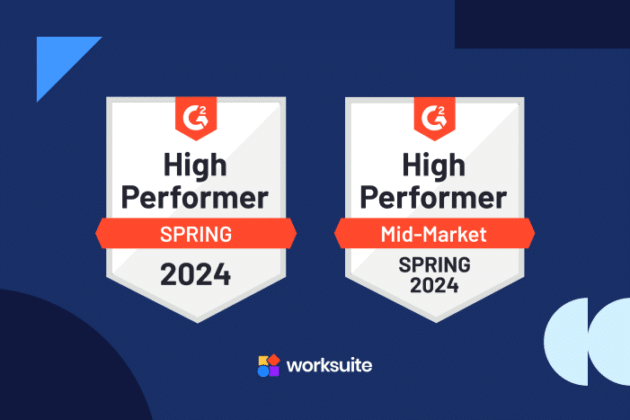
An Agency Guide to Scaling Your Creative Freelance Team (The Right Way)


As creative agencies seek to lower overhead costs, ramp up their client roster, and deliver outstanding work at scale, outsourcing to freelancers has become a desirable and common practice. Some might even say that effective freelancer management is the lifeblood of agency growth. In fact, according to content creation agency Verblio, 68% of agencies outsource content work to freelancers.
Working with freelancers is a great way to promote scalability and increase revenue while also reducing overhead costs. But without the right systems in place, managing freelancers can instead become time-consuming and costly.
By implementing the right processes and automations, creative agencies can build powerful, well-oiled freelance management machines — empowering them to serve a higher number of clients and expand their service offerings. In this article, we’ll discuss some freelancer management best practices to help creative agencies source, onboard, and collaborate with freelance professionals more effectively and profitably.
Common Challenges of Freelancer Management
Every step of the freelance management life cycle requires careful oversight — from hiring, to project briefing, to task and resource management, to payment disbursement. With so many steps and technicalities that must be taken into account, freelance management can impose quite a heavy administrative burden.
Let’s take a closer look at some common challenges of freelance management:
1. Finding the right (available) talent
Agencies always work on fast timelines and need to hire quickly for projects. This can pose a challenge if the agency has a small talent pool, or if their talent directory is disorganized or nonexistent.
Let’s say you have a client-approved budget and you need to get the ball rolling asap on a new project. There’s no time to hire employees, so you need to find the right freelancer — someone with the right skills, rate, experience level, and of course, a contractor who is available to work. How do you quickly match the talent to the job?
2. Onboarding new talent
The onboarding process can be tedious and lengthy, involving extensive paperwork and coordination among project managers, HR, and finance teams. Any delays in the process or lags in communication — which are quite common — prevent the project from getting off the ground.
Wouldn’t it be nice if you could simply “set it and forget it” while providing a consistent, on-brand onboarding experience?
3. Compliance with international hiring laws
With remote work being the new normal, agencies can find the best creative talent no matter where they’re based. Many agencies hire freelancers abroad to diversify their talent pool and scale their production output. However, ensuring compliance with local labor laws and regulations can be tricky. If not done correctly, the agency could face penalties and liabilities.
(Related: Read our Country Explorer Guide and learn how to hire talent compliantly in 47 countries!)
4. Poor visibility into spending and money leakage
Working with freelancers has the potential to be much more cost-effective than hiring employees. When you factor in health benefits and taxes, a full-time employee costs about twice their annual salary. But if not managed properly, contracting can end up being expensive, too. Inefficient onboarding processes, noncompliance penalties, and inadequate project briefings can eat into valuable time, cut into profits, and result in subpar work.
Having real-time visibility into your freelancer budget and a clear audit trail of invoices and project history with every contractor helps eliminate any rogue spend.
Best Practices for Effective Freelancer Management
Creative agencies can avoid the above challenges and scale their business by implementing effective tools, processes, and freelancer management guidelines. Here are some best practices for successful management of your contingent talent:
1. Create a streamlined onboarding process
Your team shouldn’t have to go back to the drawing board every time you onboard a new freelancer. It’s important to implement smart practices that enable your talent to complete each step of onboarding with ease and speed. For example:
- Create a chronological onboarding checklist or handbook to make sure nothing falls through the cracks. Include everything YOU need to manage and pay your contingent talent, and everything THEY need to produce amazing work.
- Organize all necessary documentation (e.g., NDAs, tax forms, etc.) into one secure location, and consider using an electronic signature tool to speed up signature collection.
- Create project brief templates for common assignments that can be filled in quickly rather than started from scratch each time. Once your talent finishes onboarding, automatically trigger the assignment or creative brief.
- Provide the detail they need — such as brand guidelines, company information, design assets, and buyer personas. This ensures quality control and improve the freelancer’s experience. This avoids back-and-forth rounds of revision later.
- Create templates for emails that are routinely sent to every new freelancer (e.g., welcome emails, document collection, project assignments, etc.).

2. Stay on top of legal and compliance requirements
There are many benefits to hiring freelancers abroad, but it’s important to be vigilant when doing so. Identities should be verified, employment status must be ascertained, and local laws should be taken into consideration. You can find a lot of this information online, such as in Worksuite’s Country Explorer, to navigate the murky waters of international hiring compliance.
The nuances of engaging talent in each country can be overwhelming. For example, did you know that Argentine freelancers pay a 21% VAT (Value Added Tax) which often gets passed onto you via their invoice? And that there are different types of freelancers in Germany — Freiberufler or Freier Mitarbeiter — each with their own tax implications? And how Australian employers must pay into their employees’ and contractor’s Superannuation (retirement) amounting to 10% of their pay?
Lastly, some countries may enforce jail time if you misclassify an ‘employee’ as an independent contractor. All of this is reason enough to stay on top of your compliance knowledge! Or, leave it to Worksuite to take care of all this on your behalf, and shield your agency from risk.
3. Maintain open and effective communication with freelancers
Good communication with freelancers is crucial to ensuring they have a positive experience and deliver high-quality work. When communication is fragmented and unclear, you simply won’t get the results you want. And your freelancers may stop coming back for more work. You can improve communication by:
- Using instant messaging, project management, and video conferencing tools to facilitate good communication.
- Setting up regular check-in meetings to get status updates and address any questions.
- Providing clear expectations on project goals and deliverables, and giving constructive feedback to improve future outcomes.
- Automating the admin tasks and eliminating back-and-forth emails. This frees up your freelancers’ time, so they can focus on the creative work.
- Leverage a centralized freelancer management system to bring all communication into one easily referenceable place.
4. Maintain an organized rolodex of freelancers
Hiring is that much faster when you can simply browse through a centralized directory of all freelance talent in your network.
Many agencies don’t have a central storehouse for their freelancers. Instead, relying on memory and past email threads to come up with names. This approach is clearly error-prone and prevents you from scaling efficiently. What’s more, all this “work about work” holds up the project and drags out your timeline, costing your agency money.
5. Optimize your tech stack to automate processes
Task automation can provide incredible efficiency for agencies. With the help of robust software tools, creative teams can free up their time from having to perform extensive manual tasks. Be sure to look for software that includes tools to help with project management, time tracking, communication, invoicing, and pay runs.

Scale Your Global Workforce With Worksuite
Worksuite’s global freelancer management system features all the tools that creative agencies need to source, onboard, manage and pay freelancers in 190 countries. With our end-to-end contingent workforce solution, you’ll spare your team from time-consuming administrative labor so they can put their minds to creative work.
Worksuite powers creative agencies with game-changing features:
- Surface Your Top Talent in a Snap: A searchable talent directory for maintaining detailed freelance profiles and surfacing your go-to talent based on ratings, rates, skills, past projects, and upcoming availability.
- Onboard on Autopilot: Customizable, automated onboarding workflows that gather necessary documentation and ensure that freelancers are ready to get to work.
- Global Compliance: Classification screening to verify workers’ employment or contractor status. Then collect and send the right documentation accordingly (supported in over 190 countries!)
- Pay On Time, Every Time: Easy-to-use invoicing that’s synced with project assignments and freelancer payment details. No more back-and-forth to collect bank details. And no more dragged-out accounting to reconcile budgets.
See why top creative agencies like Media.Monks, Jack Morton, FCB, Momentum Worldwide and Oliver trust Worksuite. Request a live demo today with one of our workforce specialists.
See why top creative agencies trust Worksuite as their freelancer management system.
Request a VIP DemoRelated Articles
Ready to scale your creative team?
Request a live demo of Worksuite's freelancer management system today.






